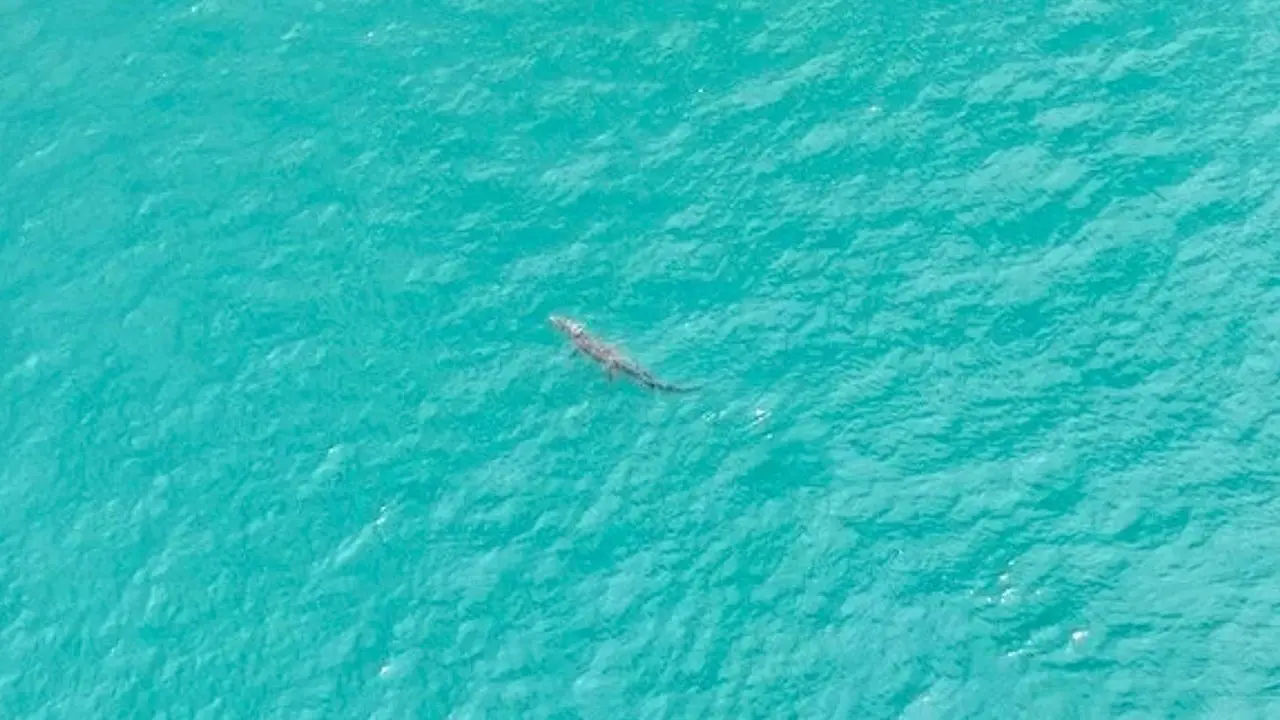
GENERAL SANTOS, Philippines – Environment officials said the recent sightings of a saltwater crocodile (Crocodylus porosus) in Sarangani Bay was not the first recorded instance; there have been several sightings since 2012, when a crocodile of its kind was found dead in a creek in Labangal in General Santos City.
Roy Mejorada, an official with the Sarangani Bay Protected Seascape (SBPS), told a press briefing Sunday, September 22, that residents found the dead saltwater crocodile along Malok Creek in Labangal in July 2012.
Another saltwater crocodile was found dead on September 21, 2014, and its remains have been preserved and displayed at the Sarangani Wildlife Museum of the Environmental Conservation and Protection Center in Alabel town, Sarangani.
Alarmed
The sighting of a four-meter saltwater crocodile by a fisherman in Purok Minanga, Barangay Buayan in General Santos, on August 27, followed by another sighting on September 11 and several other sightings near houses along the bay’s shorelines, alarmed residents and barangay officials.
They planned to hunt down and capture the reptile dead or alive, fearing it would affect their livelihood.
“Hadlok na mangisda (We are scared to go fishing),” said fisherman Carlo Cabridilla of Purok Minanga, a community near the delta of Buayan River.
However, the Department of Environment and Natural Resources (DENR) in the Soccsksargen region warned that killing or capturing saltwater crocodiles, whose population has dwindled drastically, is prohibited by law and carries stiff penalties.
Lawyer Felix Alicer, DENR Soccsksargen executive director, said only trained experts and professionals could carry out what the group was planning. He also advised residents to take extreme caution when near the water, noting that “saltwater crocodiles are aggressive ambush predators, they wait for their prey.”
DNA extraction
Wildlife experts tapped by the DENR to investigate the reported presence of a saltwater crocodile in Sarangani Bay said they intend to capture the four-meter reptile to extract DNA samples and determine its origin.
However, they face the formidable task of locating the reptile and securing the legal requirements to capture and extract DNA. Capturing or killing a saltwater crocodile carries stiff penalties under Philippine law.
“We have no exact idea if it is still out there now,” said Marvin Sarmiento, chief field biologist of Crocodylus Porosus Philippines Inc. (CPPI), on Sunday.
According to Sarmiento, they face the challenge of pinpointing the exact location of the crocodile or determining if there may be others.
Sarmiento said they could not yet ascertain if the crocodile sighted by a fisherman on August 27 in Barangay Buayan, this city, is the same as the one seen in Lun Padidu, Malapatan town, on September 14.
“By obtaining its DNA, we would be able to compare it with DNA specimens we have collected from Batanes to Tawi-Tawi,” he said. He added that DNA testing revealed that saltwater crocodiles captured in Simunul, Tawi-Tawi, in 2020 and 2017 had swum to the island from overseas.
Saltwater crocodiles, also known as Indo-Pacific crocodiles, are capable ocean swimmers and can thrive in lakes and rivers, unlike the smaller Philippine crocodiles (Crocodylus mindorensis), which stay mainly in freshwater and cannot survive in the sea.
Dwindling population
To capture the crocodile for DNA extraction, Sarmiento said they must follow specific legal procedures and protocols that protect saltwater crocodiles, whose population in the Philippines is rapidly dwindling.
In the Philippines, saltwater crocodiles are considered critically endangered. A briefer issued Saturday by the DENR Soccsksargen said that over 6,000 saltwater crocodiles still exist in the country as of today.
Sarmiento said reports from residents indicated that the crocodile had been moving along the eastern coast of the bay, where shorelines are lined with mangroves and tributaries.
Initial assessment
In their initial findings, Sarmiento said there are areas in the bay where “the crocodile can dwell, but these cannot support a population,” possibly explaining why the crocodile is constantly on the move.
The wildlife expert showed this reporter a digital map of the shorelines of Sarangani Bay, with dozens of spots where the reptile had been sighted since his team arrived.
Based on reports from residents who saw the crocodile at specific times and locations, Sarmiento said they plotted its movement, which was heading toward the mouth of the bay.
“This may indicate that the crocodile may have already left the bay or it may still be there. This is just hypothetical and needs further validation,” he explained.
He said, however, it would not be a good idea to assume that the crocodile has already left.
“Baka magkampante ang mga tao tapos nandiyan lang pala ang buwaya (People might relax, but the crocodile could still be there),” he said.
Mejorada said residents consistently reported that every time they attempted to approach the crocodile, it moved away. Even drone footage of the crocodile shows it submerging every time the drone descends to get a closer view, Miranda added.
Sarmiento said this behavior indicates that the crocodile is wild and unfamiliar with the area. Saltwater crocodiles, being territorial and ferocious, usually display aggression by twitching their tails and lunging their heads to strike, he explained.
Understanding the crocodile
Sarmiento emphasized that saltwater crocodiles do not differentiate between humans based on age or size; they see all humans and animals as objects or prey. It does not attack objects larger than itself, so when people are on boats larger than the crocodile, they are safe, Sarmiento said.
“It’s only in the movies that crocodiles attack boats,” he added.
Alicer said they have formed a quick-reaction team to help the CPPI team track down the crocodile. Monitoring will continue until October 15, he said.
Sarmiento, part of the four-member CPPI team that arrived Thursday, September 19, clarified that their mission is not to protect the crocodile from humans but to educate the public about crocodiles to reduce potential conflicts.
“We are foremost for the preservation of human life,” he said. But, humans also need to understand how important wildlife and the entire ecosystem is to human existence, he said. – Rappler.com